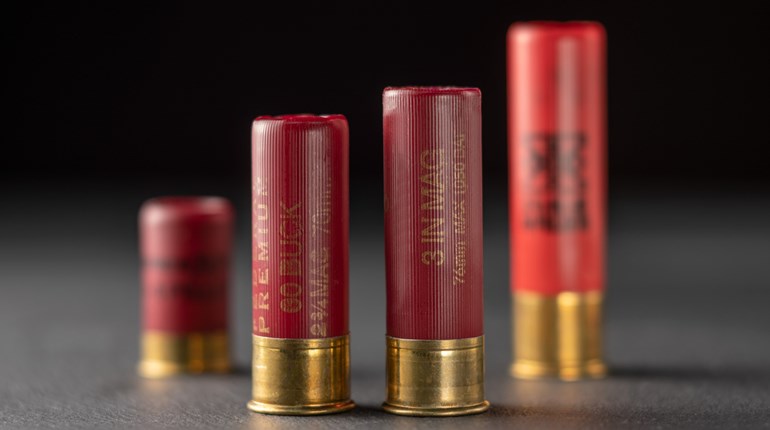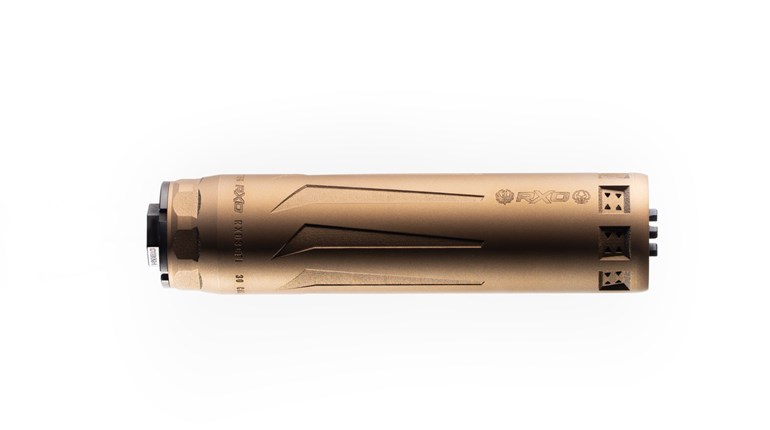
Why did I continue to look at my watch when I knew it mattered none? Out of habit, perhaps? Hope? Or maybe we do things sometimes just because we want to know how we will respond to adversity. Indeed, sometimes we must test ourselves. Only this little test was fast becoming torturous, when all I really wanted to do was kill a damn moose.

One-thirty a.m. Rats! I shouldn’t have looked. I’d have sworn it was at least 3. I could hear the Germans talking in their foxholes, so I knew they were cold, too. It wasn’t like they had some Hefeweizen and a sauna over there. I wished they’d either tell some stories in English or pipe down.
I turtled into my jacket and hugged my closest friend, the fire. Oh glorious, yet pathetic little fire! The micro fleece garb I wore was great for hunting, but I wish it were thicker for sleeping. Macro fleece, maybe. Or plied with eider down. Or wool. Heaps of wool. An L.L. Bean sleeping bag never sounded so in style! My mind began to wonder, I suspect, like people do when they’ve got nothing to do except wait for the earth’s rotation and shiver. So naturally I began to wonder why I’d signed up for this foray above the Arctic Circle with no food, water, shelter or heavy clothing.

The Mission
Months prior I’d received a cryptic, James-Bond-type letter from a London-based PR agent named Simon K. Barr. It read: “You are one of several international outdoor writers selected to be Tested to the Edge.”
The edge of what? I thought.
“If you agree, you’ll be flown to Stockholm, Sweden, where you will receive further instructions.” It went on: “Pack a comfortable pair of boots and a toothbrush, nothing more.” And I believe there was something about hunting moose. Yes, I know there was.
Early October found me in the Stockholm airport with 11 other dudes and one girl. The last time I read the word “giddy” in a hunting story, I burned the magazine and cancelled my subscription, but that described the motley, international crew of hunters before me. Everyone was yapping like fresh hunders on scent, only in various accents.
There were two Spaniards, two Germans, a Dane, three Englishmen including Mr. Barr, a videographer and a former British SAS survival expert named Conrad Allen. He was there to ensure we didn’t die. There was the other American, Neil Emery of Hornady ammo, and two New Zealanders, Davey Hughes and his daughter Taygen of Swazi wear. Soon we boarded the plane for Lulea, Sweden, about 900 kilometers farther north, yet still there was no talk of the plan.
Lulea is a town on the Gulf of Bothnia that borders what’s known as the Swedish Lapland. It’s vast, spongey, Alaska-like moose country with river valleys and grassy meadows surrounded by pinewood forest and dramatic glacial mountains. Here we were introduced to our moose guide, Tommy Holmberg, a little wiry fella with more hair on his chin than his head. He could’ve easily been the front man for a metal band had he worn black leather. Fortunately he preferred fleece.
From there we were to drive about 200 kilometers north, into the Arctic Circle. We dodged caribou before the two-lane ended at a small fishing camp, called Arrenjarka, that was as far as humans can travel north in Europe by car. Finally, at the last supper, we were fully briefed on the mission.
At dawn the next morning, we’d be dropped off by boat into Europe’s most remote wilderness, called Norrbotten County. From there we’d hike an unknown distance until we found a suitable campsite from which we’d hunt and flourish. It sounded great to me.
“Now for the catch,” said Simon, as he dumped a few pieces of kit from a small backpack on the floor: “You can only take this and your rifle.”
Our allotment of gear included the relatively thin Swazi clothing Davey issued each of us, a Mauser m12 Extreme rifle, Hornady ammo, Leica Geovid binocular, a compass, knife, flint, cup, hatchet, emergency poncho (basically a trash bag that your friends can roll your carcass in if you perish) a tampon and some para cord. (The tampon, we learned, makes top-notch firestarter.)
Still, it sounded like a scout camping trip to me. I mean, I usually get a little hot at night anyway. We had rifles, knives, plus a British badass to save us from ourselves. So the next morning, into the wild we went. The first thing that hit me was a blast of arctic air over the lake that pushed the temps into the teens.

Welcome to the Arctic
Night No. 1 was sheer disaster. We’d hiked in 17 kilometers (but many more while circuitously scouting for sign) with no breaks for food because we had none. The walking wasn’t too bad until we lost the trail, and then it became hellish. After a small argument about where best to camp, the team finally settled on a spot of high ground near a river. Wasting little time as nightfall neared, we turned that hillside into the Ewok village, sparked up our fires and dug in.
It’s funny, but when I was building my shelter with lopped pine boughs and moss to patch the holes just like Conrad had instructed, I actually began to believe it’d be all warm and toasty in there, what with a fire to “reflect” heat and a little pine-lined hole to crawl into like a badger. Then the sun vanished and the temperature dropped like the value of oceanfront propety after a hurricane. The arctic wind whistled through my sad little hovel like a shotgun blast through fishnet stockings. Had we had sleeping bags, it would have been fine. But someone—his initials spell SKB—nixed that motion. As it was, I slept not a wink.
The problem was, our little Indian fire Conrad said was most efficient hardly gave off enough heat to warm my toes. If I gave it more wood it’d burn too fast and demand more wood. And if you’re feeding a fire constantly you’re obviously not snoozing. And then, of course, when you try to sleep around a fire to stay warm there is that little problem of choosing which side of your body to warm up and which side to sacrifice. What results is a sort of human rotisserie that ultimately results in dirty clothes and sleeplessness. I gave up around 3 a.m. and began pacing to stay warm. That’s when I noticed several of the guys were already up.
Conrad was brewing something that I prayed was coffee. Rather, it was a coal-like lump of fungi called chaga that he’d pried from a birch tree and brewed in river water. At least it was hot. My secret was pretending it was scotch. Soon the sun made its scheduled appearance, and wow, stunning beauty of the Lapland distracted us momentarily from the distinct lack of bacon.
One day, one night down. I had some fungus water and a few native berries in my shriveling stomach. My legs were rubbery, but still, I was looking forward to the day. No doubt I’d bag my moose early and gorge on backstraps for brunch. Then, after a nap, maybe I’d rig up a fishing pole and smoke an arctic char before making a hammock. At any rate, everyone knew this test came down to killing a moose. If we did, we’d survive in style. If we didn’t, we’ll, who knew? So we drew straws to see who would hunt and who would do camp chores. My straw looked like a .22 Short.

Hovel Improvement
If Davey Hughes walked directly into a packed arena in any major city on a Saturday night, hopped over the top turnbuckle and pile-drived Ric Flair, nobody would think anything of it. A former professional trapper-turned-entrepreneur, he’s hunted nearly everything in the world, including Cape buffalo and water buffalo with rifle, bow and spear. His wild blonde hair looks like Braveheart’s, but he’s got a Shrek-like manner about him.
Davey and I became noted hovelists among the clan. Our goal was to construct an abode that’d feel more like a condo than a cave. So we spent considerable time, thought and energy revamping it. It’s amazing what motivated people can accomplish with teamwork and a hatchet, some para cord and imagination. And it’s also amazing what the arctic wind can do to your plans.
With more firewood gathered and the doormats dusted, I turned to one of the guides—Vidar Segerstrom—who was only there to point us in the right direction.
“What’s he do?” I muttered, pointing to the little collie-like dog that was now snoozing in my badger hole. “Bear watch,” said Vidar Segerstrom. “The Big Black Bastard lives out here somewhere.” He pointed his knife in a semi-circular motion that must have covered 100 square miles.
“What?”
“A huge, black-colored brown bear. Been trying to kill him for 12 years. He’s ruined a couple of our best dogs,” said Vidar.
“Ruined? How?” I asked, in a shaky tone not unlike Shaggy from “Scooby Doo.”
“He toys with them,” replied Vidar. “Baits them, circles on his track, chews them up, but leaves them alive. Messes with their heads. Stuff like that.”
”Oh,” I said, nonchalantly. (Through intensive interrogation later I’d learn this was no spook story but a real bear that was obviously Tommy’s white whale.) “But the dog mainly hunts capercaillie.”
“Capri-what?” Vaguely, perhaps it was from a “Boddington Hunts the Last Corner of the Universe” book or something, I remembered the word. “Caper. Capercaillie,” he nodded. “Black gamebird.”
“Do they have meat on their breasts?”
“Yes.”
“Can we hunt them?” I asked.
“Yes.”
“Too bad we don’t have shotguns,” I said, deflated. I’d told that damn Simon we should have shotguns. Maybe a Rigby. Or a Henry. Whatever. “Crap,” I said. It translated. “We hunt them with rifles,” said Vidar.
“Rifles?”
“Yes, rifles.”
“But we have .308s and .300 Win. Mags.,” I fired back. “Perfect,” he said. “Let’s go,” said I.

Hunting for Survival
Please allow me a tangent, because capercaillie hunting is probably the weirdest bird hunt ever. This ground-loving, tree-nesting bird is the world’s largest grouse. It has eyes keen as ground glass. Mature males can weigh up to 6 pounds. Because they can be taken at several hundred yards after a dog flushes them to a tree, a centerfire with FMJs is the load of choice. Rest assured, this isn’t a sport for suburban woodlots.
As a self-proclaimed bird hunter myself, thoughts of bagging the bird consumed me, as did recipes for it. Caillie poppers, grilled caillie, capercaillie tacos—the list was limitless. And providing some meat to our weakening team as backup if the moose hunt didn’t pan out made me feel useful. A spot-and-stalk bird hunt with a dog and a rifle. How hard could it be?
We traipsed over the mountainside and the Finnish Spitz would bark and sometimes we would stalk. But every time, we’d then hear beating wings in the distance that crushed our spirits. So we’d walk more. As my energy level neared “E,” the pressure to kill mounted.
And then, finally! Bebi barked and we spotted one! It was sitting in a tree 50 yards ahead, staring at me with its beady eyes. I’d soon forge my legacy of hunt hero and noble provider of bird! Methodically, I raised the Mauser and peered through the Leica to see the magnificent undulation of capercaillie wings as it flew off. Five hours and kilometers later, Vidar and I slunk back into camp like lowly creatures, birdless, famished and defeated.
Just as I was contemplating falling on my own survival hatchet, we heard a rifle crack echo through the Lapland. It had all the joyousness of the final bell on the last day of school! We let out a collective cheer, knowing that one shot often means one kill. Then, as we heard another shot, then another, then another, then another, we let out a collective sigh. Five shots could mean five moose, or, more likely, it could mean more fungus for dinner.
Now, keep in mind I’m normally not the guy who pitches a hissyfit if I miss a shot or an animal gets away. But this time was different. I wanted the first animal worthy of flame and fork to die so I could cut its muscles from its body and eat them on the spot. If it was a bull moose, wonderful. If it was a sickly calf, hallelujah!
Hours later, one of the moose parties returned. Bloody hands foreshadowed their message. Nick, the German writer, had taken his first moose, a calf, as it ran across the marsh. It took several hours to pack out the beast, hang the meat and bring the choice parts to camp, but it was a labor of love. Finally, about 40 hours since we’d last eaten, we sharpened sticks, waved the flesh over a flame and plunged it into our mouths like feral people. I’ll spare you the adjectives describing its flavor, but heavenly is one. We would survive.
As night fell, the other hunting party returned as we had moved to the second course, moose tongue broth. I’d never seen such an exhausted bunch, as they had hunted from dawn till dusk on no food. Yet they were also elated—elated because they could smell the steaks cooking as they approached camp, and because Nikolaj, the big Dane, had killed a giant bull when it came to Tommy’s calls high on the mountain.
I noticed there was more laughing around the fire that night. Stories of the hunts were relived in relative comfort. As the green glow of the Northern Lights enveloped us, we turned in to rest for the arduous hike back to civilization in a couple days.
Although the arctic night was bitter cold, I noticed it can more easily be ignored if the body and mind are fueled with pride of accomplishment. (And moose filet also helps.) I don’t pretend to be Jeremiah Johnson, but I do love a good adventure, and certainly this one tested me soundly.
As for the long hike out? Simon had another surprise in store: We took a boat to a hidden hunting cabin that was full of Hefeweizen, Swedish chocolate and, yes, a sauna and bathhouse. Which leads me to a truism: Sometimes it’s good to test yourself; other times it’s best to test the waters.




































